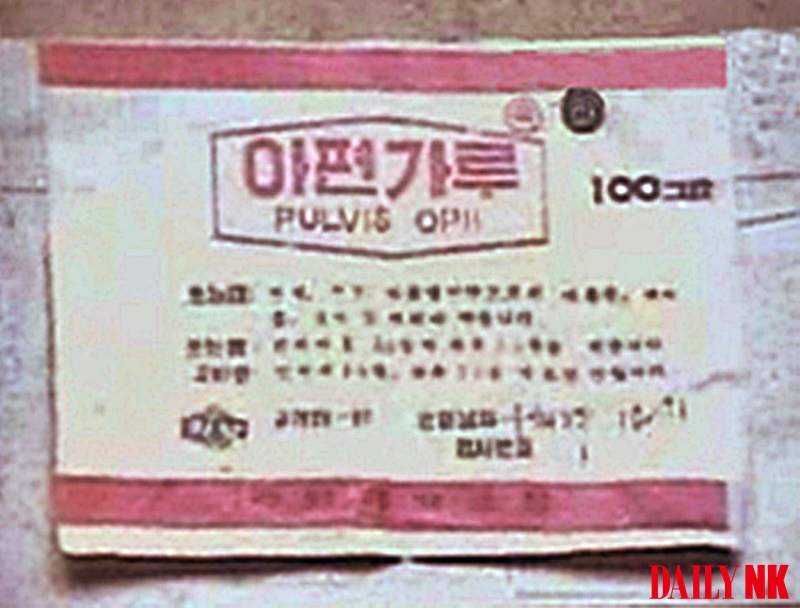
Methamphetamine-based stimulants known as “bingdu” or “ice” are widely available and related crimes remain prevalent in North Korea, an internal source has reported.
Drug producers, distributors and dealers are highly active, with residents advising each other, “If you want to get rich, sell bingdu.”
According to the US State Department’s “2017 International Narcotics Control Strategy Report,” methamphetamine is widely produced and consumed in North Korea and independent criminal organizations act as major suppliers.
The North Korean authorities recognize the seriousness of the spread of illicit drugs and have been cracking down on them. However, criminal organizations have formed strong connections with government officials, making it very difficult to eradicate them.
Recently, a Daily NK source in North Hamgyong Province built a relationship with a high-ranking police officer. “In North Hamgyong Province’s Chongjin City, this year’s statistics on frequently-occurring crimes was published, with drug crimes being the most frequent,” the source said.
“Theft of state property, petty theft, robbery, murder and drug offenses were included in the statistics and the number of drug offenders was the highest. Belonging to a cartel is a common characteristic of these offenders, and suggests that drug crimes are widespread and organized.”
The North Korean authorities have stated that those who produce and distribute narcotics will be subjected to severe punishment, similar to treason. Furthermore, the Ministry of State Security, Police and even the Provincial Security Agency have jointly formed a task force to wipe out narcotics.
However, drug-related crimes are only temporarily reduced during crackdown periods, and bounce back soon afterward.
There have been a lot of cases of families breaking apart because of drug addiction, a separate source in North Hamgyong Province reported, sharing the case of a Party chairperson’s daughter, Kim Sung Hye (alias), who became addicted and is now facing a divorce.
After three years into her marriage, Ms. Kim came into contact with an opium-based narcotic as a part of medical treatment and began to show symptoms of addiction. Afterwards, she started to use ice and has been living as an addict for over five years, the source reported.
“The woman, despite her husband’s care, began selling things from her house to buy narcotics and is now showing severe signs of addiction. The husband has run out of patience and is asking for a divorce,” the source said, adding that local residents were surprised that although both her father and husband are senior staff in the Party, they could not stop her from using drugs.
“If her father was not the county’s Party secretary, she would have been sent to a correctional labor camp long ago,” she surmised.
An additional source in North Hamgyong Province said that a significant number of drug addicts in North Korea are reported to have initially used opium to treat their illnesses or turned to methamphetamine as a painkiller. Orthopedic patients with back pain report that narcotics are highly effective in killing pain.
*Translated by Yongmin Lee

















